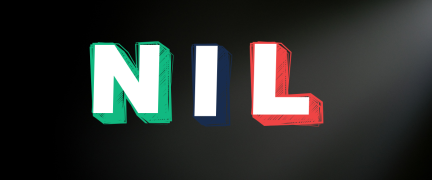We stand at a turning point for college athletics. On June 30, 2021, the NCAA adopted an interim policy that let student-athletes monetize their name, image, and likeness. That change opened immediate earning chances and new compliance duties for athletes and schools.
State statutes and institutional rules now shape daily practice. Where states have active laws, athletes must follow those statutes plus any school or conference policies. In states without statutes, institutions and conferences set the baseline.
This article explains how past court decisions and current rules affect recruiting, team culture, and athlete contracts. We show what counts as NIL activity, how professional service providers help athletes, and why consistent federal action could ease compliance across states.
Where NIL Legislation Stands Now: State and Federal Snapshots
The post-Alston landscape mixes NCAA interim policy with diverse state statutes that set daily requirements for athletes and institutions.
NCAA interim policy: athlete, school, and conference duties
The NCAA’s interim policy, adopted June 30, 2021, authorizes student-athletes to earn from their name, image, and likeness and to hire professional representation. It also requires reporting of deals in line with applicable state law and institutional or conference policies.
Key obligations: disclose deals, follow your school’s review process, and coordinate reporting with your conference. These rules remain until federal action or new NCAA rules take effect.
State models: California’s SB 206 and Florida’s approach
California’s SB 206 set the template: protect athlete participation and scholarships, permit licensed agents, bar schools from paying prospects, and require contract disclosure that avoids conflict with team contracts.
Florida moved quickly and added practical steps: schools must provide at least five hours of financial literacy and life skills training at the start of an athlete’s first and third years.
- Third-party payments are preferred—schools may not directly or indirectly pay for compensation.
- Licensed representation and contract disclosures are common requirements across states.
- “Conflict with team contract” typically means endorsements or mark use that clash with existing sponsorships.
Practical checklist for you: verify your state law, align with institutional policies, prepare disclosure workflows, and train teams on compliance and representation rules.
NIL Legislation Tracker: States With Active Laws and Pending Bills
We track enacted statutes and active bills so you can plan compliance steps in advance.
States that have enacted laws and varying effective dates
Six states had passed state nil laws by mid‑February 2021: California, Florida, Colorado, Nebraska, New Jersey, and Michigan. Effective dates differ, so your college or school must flag the operative day for each state.
California and Florida led the change and prompted other states to accelerate timelines. Iowa, New Mexico, and Maryland targeted July 1, 2021, while California considered moving its original January 1, 2023 start date earlier.
Proposed and pending state bills: timing and reporting shifts
Many pending bills mirror early models but vary on effective dates and reporting duties. Under the NCAA interim policy, athletes in states with active laws must follow those statutes plus institutional policies. In states without enacted laws, school and conference policies set the baseline.
Common state provisions
Most laws permit licensed professional representation and forbid schools from paying prospects for athlete compensation. Scholarships remain protected from being treated as pay.
- Required disclosure of contracts to a designated official.
- Screening for conflicts with existing team contracts.
- Protections against association sanctions when athletes comply with state law and school policies.
Enforcement varies: Colorado authorizes injunctive relief, and Nebraska allows civil damages and attorneys’ fees—so institutions and institutions should align their compliance workflows now.
Federal NIL Bills to Watch and How They Diverge
At the federal level, lawmakers offer varied blueprints for how athletes can earn, how colleges must report deals, and who enforces rules.
Student-Athlete Equity Act (Rep. Mark Walker)
Tax-code leverage: would strip tax-exempt status from amateur groups that substantially restrict a student’s use of their name, image, or likeness.
Fairness in Collegiate Athletics Act (Sen. Marco Rubio)
This bill directs the NCAA to set nationwide rules, grants an antitrust safe harbor, requires contract disclosure, and assigns enforcement to the Federal Trade Commission.
Student Athlete Level Playing Field Act (Reps. Gonzalez & Cleaver)
Allows endorsements while banning university pay for endorsements, limits categories like tobacco and alcohol, and confirms athletes are not employees.
College Athletes Bill of Rights (Sen. Cory Booker et al.)
Proposes group licensing, revenue sharing, transfer freedom, lifetime scholarships, and an expert panel to set baseline standards.
Athletes Compensation Rights Act (Sen. Roger Wicker)
Restricts booster payments for compensation and empowers the FTC to select a nonprofit to oversee rules.
Murphy-Trahan proposal (Sen. Chris Murphy & Rep. Lori Trahan)
Minimizes association control over product approvals, requires equitable institutional support, and mandates annual federal reporting by race, gender, and sport.
- Enforcement differences: Rubio ties oversight to the FTC; Wicker creates a private overseer chosen by the FTC.
- Reputational limits: Gonzalez/Cleaver would limit tobacco and alcohol endorsements to protect athlete rights.
- Practical impact: federal rules could standardize disclosure, ease institutional compliance, and shape contract templates.
Prepare now: draft flexible team policies, update contract templates, and plan education programs that anticipate federal standards on disclosure, representation, and restricted categories.
Conclusion
Managing disclosures, contracts, and team conflicts will define how programs protect athletes and program values.
We encourage you to monitor your state rules and federal proposals on nil legislation so you can adapt quickly. Build a living compliance playbook that maps school policy to state requirements.
Document every contract—name, image, duration, and compensation—to speed review and avoid team conflicts. Train athletes on life skills and financial literacy as part of routine education.
Prepare flexible templates and training now so schools and programs can pivot if Congress or regulators set national standards. We remain committed to guiding college communities through this ongoing change.
FAQ
What is the current federal and state landscape for athlete name, image, and likeness rights?
The landscape combines a patchwork of state laws and several federal proposals. States vary on effective dates, disclosure rules, and whether student-athletes can be compensated directly. At the federal level, multiple bills propose different frameworks — from protecting school control to enabling stronger antitrust and consumer protections. Schools and conferences must track both state requirements and any interim NCAA policy that governs campus compliance.
How does the NCAA’s interim policy affect athletes, schools, and conferences?
The NCAA’s interim approach allows athletes to earn from endorsements while preserving some eligibility rules. Institutions must update compliance policies, supply education to student-athletes, and monitor agreements for conflicts with team contracts. Conferences may issue additional guidance on collective activities and institutional reporting to remain within both NCAA and state rules.
Which states led early changes modeled on California and Florida?
California’s model law and Florida’s early leadership shaped many state responses. Several states adopted versions permitting compensation, establishing disclosure timelines, and defining how institutions must handle conflicts with team agreements. Each state differs on effective dates, tax treatment, and reporting standards, so local rules matter for athletes and schools.
Which states have active laws and which have pending bills?
Many states have enacted active laws; others still have bills moving through legislatures. Active laws include provisions for compensation, disclosure, and sometimes tax guidance. Pending bills often focus on tightening compliance reporting, changing effective dates, or adding penalties for noncompliance. Institutions should consult state trackers and legal counsel for up-to-date status.
What common state provisions should athletes and schools expect?
Common provisions address athlete compensation, conflicts with team contracts, disclosure of deals to schools, and sometimes limits on endorsements related to alcohol or tobacco. States also vary on whether boosters may directly negotiate deals and on required reporting formats. Clear compliance procedures and timely disclosures protect eligibility and institutional standing.
How do federal bills differ in their approach to athlete rights?
Federal proposals vary widely. Some, like the Student-Athlete Equity Act, use tax and amateur-org rules to limit restrictive conduct. Others, such as the Fairness in Collegiate Athletics Act, emphasize FTC enforcement and antitrust safe harbors. Bills differ on group licensing, revenue sharing, tobacco and alcohol endorsement limits, and whether athletes are treated as employees or independent earners.
What does the Student-Athlete Equity Act propose?
That proposal aims to curb restrictive amateur organization rules through tax-code mechanisms and limit certain NCAA controls. It focuses on creating clearer boundaries so athletes can pursue compensation without undue organizational constraints, while preserving some college-sport structures.
How would the Fairness in Collegiate Athletics Act change NCAA rulemaking?
This bill would increase FTC and antitrust oversight, restricting NCAA rulemaking that limits athlete marketplace activities. It seeks to create safe harbors for lawful deals and give regulators tools to review anti-competitive practices, shifting some authority away from a solely self-regulating model.
What limits do the Student Athlete Level Playing Field Act proposals include?
Those bills typically allow endorsements and market activity but may place limits on tobacco and alcohol promotions. They emphasize preserving student status while clarifying that athletes are not employees of their institutions. The proposals also outline permissible activities and reporting duties for institutions.
What does the College Athletes Bill of Rights propose for group licensing and revenue sharing?
The College Athletes Bill of Rights supports group licensing, broader revenue sharing, transfer freedom, and lifetime scholarship guarantees. It aims to expand collective bargaining-type benefits for athletes and create mechanisms for pooled licensing revenue to be distributed among participants.
How does the Athletes Compensation Rights Act differ from other federal proposals?
This act focuses on limiting booster control over deals and sets an oversight role for agencies chosen by Congress, such as giving the FTC a selection role. It targets specific market actors and seeks to balance athlete compensation with protections against undue booster influence.
What are the key elements of the Murphy-Trahan proposal?
The Murphy-Trahan approach calls for minimal NCAA control over personal deals, equitable institutional support for athletes, and standardized federal reporting. It aims to protect athlete autonomy while ensuring transparency from institutions and conferences.
How should athletes and schools prepare for changes at state or federal levels?
Maintain up-to-date compliance programs, educate athletes on contract basics, and require timely disclosures of deals to institutional compliance officers. Monitor state trackers and federal developments, consult legal counsel for contract review, and adopt clear policies that align with both state law and any applicable NCAA guidance.
Will federal action replace state rules or create uniform standards?
Federal action could create baseline standards, but differing bill outcomes mean states may still have unique rules. A federal law might preempt some state provisions, but until Congress enacts comprehensive legislation, a mixed system of state laws and institutional policies will remain in place.
Where can institutions and athletes find reliable, updated information?
Use official state legislative trackers, the U.S. Congress bill database, NCAA policy pages, and consultations with sports-law attorneys. Conferences and institutional compliance offices also post guidance; regular review of these sources ensures you stay current with changes and reporting requirements.






Leave a Comment